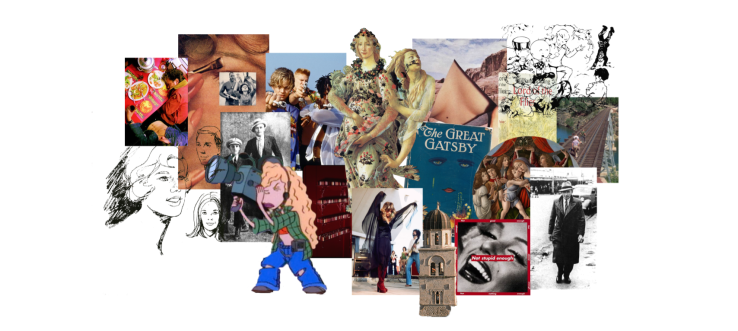
TIMELINE ASSIGNMENT
STORYWORLDS
3 CONTEXTS
- HERITAGE (CROATIAN HISTORY)
- SOCIAL CULTURE (HISTORY OF FILM)
- INSPIRATION (RENAISSANCE, FEMINIST ART)
HERITAGE
CROATIA AND MY FAMILY
Referenced in Visual
- Maté Vučić (My Great-Granddad) photographed in Croatia Date Unknown
- Photographed in Whangarei 1950
- Building in Dubrovnik (where my family are from)
HISTORY OF CROATIA
Family History
400BC Greek colonies founded on the islands of the Adriatic Sea
925 King Tomislav crowned first King of Croatia, establishing the Croatian Kingdom
1102 Croatia enters union with Hungary after the death of the last King Peter Svavic
1382 Dubrovnik buys it’s independence from the Hungarian King
1526 Ottoman’s win the battle of Mohacs, beginning their rise to power in Croatia
1847 Croatian becomes an official language, replacing the prior-used Latin
1895 My Granddad Maté Vučić is born in Dubrovnik in December
1918 The Austro-Hungarian empire is abolished after the end of WW1 and the Kingdom of Serbs is established (later named Yugoslavia) with Serbia, Croatia and Slovenia
1941 Nazi Germany invades and attacks Serbs and Jews, Croatia takes in Bosnia and western Serbia to become a ‘Greater Croatia’
1942/47 My Great-Grandfather migrates to New Zealand, marries my Great-Grandmother Alvaretta and gives birth to Neville and Petar Vucich (my Grandfather and Great-Uncle)
1945 Croatia becomes a republic of the Yugoslav socialist federation, going against the rule of communist Yugoslav leader Josip Broz Tito
1965 Maté Vučić dies when my Grandfather is 19 years old
1980 Tito dies, beginning the collapse of the Yugoslav federation as republics begin to claim their independence
1989 Collapse of communism in Eastern Europe
1990 First free election in Croatia in 50 years. Communists lose to the Nationalist Conservatives
1991 Croatia declares independence to contempt within Serbia, by December, one third is under Serbian power
1992 Croatia becomes involved in the Bosnia-Herzegovina war, supporting the Bosnian Croats against the Bosnian Serbs, then against the Bosniaks (Muslims)
1995 The Bosnia-Herzegovina war ends and Croatia begins to claim back it’s land occupied by the Serbians
1996 Croatia restores its relationship with Yugoslavia
1998 Croatia claims back control in the last area occupied by the Serbians
2000 The liberal Croatian People’s Party, headed by Stjepan Mesic enters government
2009 Croatia joins NATO
2010 President Josipovic visits Belgrade, suggesting a thawing of the relationship between Croatia and Serbia
2011 Croatia signs EU accession treaty
2013 Croatia becomes the 28th member of the EU
2015 Kolinda Grabar-Kiratovic is elected Croatia’s first female president
2016 Andrej Plenkovic becomes the president
BIBLIOGRAPHY
HISTORY OF CROATIA
A SHORT HISTORY OF CROATIA. (n.d.). Retrieved November 18, 2017, from http://www.localhistories.org/croatia.html
A TIMELINE OF CROATIA. (n.d.). Retrieved November 18, 2017, from http://www.localhistories.org/croatiatime.html
Croatia profile – Timeline. (2017, March 17). Retrieved November 18, 2017, from http://www.bbc.com/news/world-europe-17217954
Maxwell, C. (2013, February 28). Crash Course in Croatia’s History. Retrieved November 18, 2017, from http://www.travelchannel.com/destinations/croatia/articles/crash-course-in-croatias-history
Planet, L. (n.d.). Lonely Planet. Retrieved November 18, 2017, from https://www.lonelyplanet.com/croatia/history